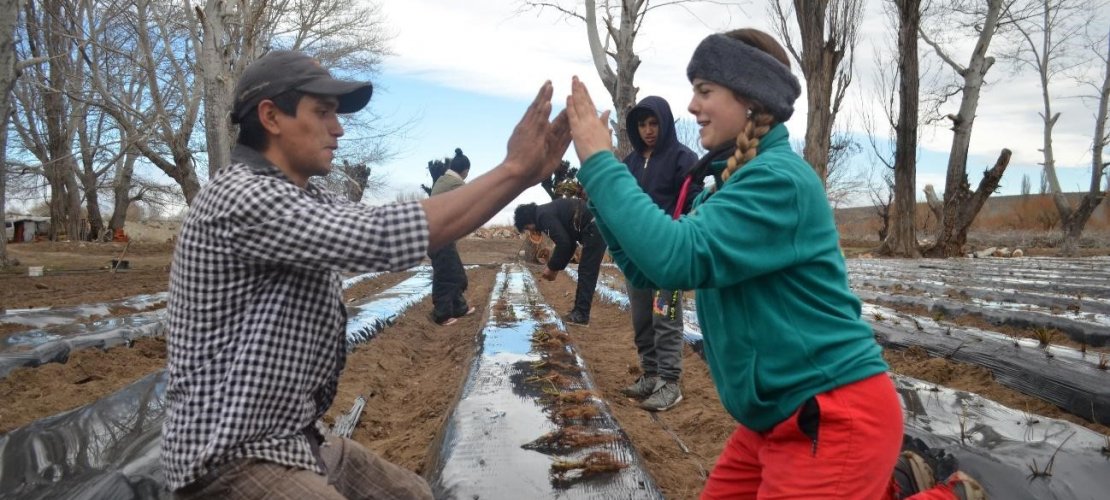We have concluded the first sustainable horticulture projects in Patagonia: Kelleñ Kuruf - Frutillas del Viento is born!

The main objective of the projects is to strengthen the economies of family farming through access to water with renewable energies for productive uses of high nutritional and commercial value, in technically and financially sustainable production units.
We are grateful for the funding from the Embassy of New Zealand, the Swiss Embassy and the Bayer company.
The connection with local actors (mainly the INTA and associations of small producers and Mapuche and Creole indigenous communities) has been fundamental and will continue to be so in view of the sustainability and scalability of the project.
Our motivation for carrying out the projects is to contribute our knowledge so that renewable energies, and especially wind energy, become a vector of development for the Patagonian Steppe, a semi-arid and enormous region, whose winds are among the best in the world.
We understood that this development is possible by promoting horticulture, which is currently the second productive activity in the region (carried out domestically and marginally) and generating a change in the socio-productive paradigm: from sheep farming with a high environmental impact and low profitability to sustainable horticulture with high profitability, with efficient use of water and harnessing the wind in one of the windiest regions in the world.
It is a motivation shared by many people from that marginalized and apparently sterile region, from engineers from INTA in Esquel to the producers of family agriculture themselves, some of whom see this as an opportunity. And together with them, the vision of a productive Patagonia emerges with greater strength. We believe that there is no impediment to this, if the appropriate technologies and practices are provided through training and access to financing. Where others see deficiencies, we see opportunities and the Steppe is pure potential: productive potential, wind potential and even solar potential, in summer when water pumping is most needed, and of course, human potential.
The most significant change achieved in the community where we are implementing the project was to confirm that it is possible to transform a plot of land that is apparently unproductive into a technologically advanced and highly profitable production space. It refers to a change in worldview, to transformations in the perception of the territory, to profound ruptures in cultural patterns and socio-economic practices. The beneficiary families and neighboring rural residents are very enthusiastic about the novelty, and word began to spread and new producers spontaneously contacted us to participate in the project. The enthusiasm was reflected in a name that identifies it: Kelleñ Kuruf: Strawberries of the Wind. And it will be on the product labels, accompanying the particular name of each enterprise.
We believe in understanding small family farming economies as socio-productive systems, which require sustained support, continuous strengthening of their skills and capabilities, and understanding them within their respective value chain. That is why our current energies are focused, without neglecting the productive aspects, on consolidating the marketing components.
Basically, the main challenge is to achieve access to appropriate technologies, through practical training and investment/credit/financing.
So, what have we achieved? Two complete production facilities were built within the framework of community training days, in the rural areas of Gualjaina and Sierras de Tecka in the Patagonian Steppe of Chubut. The facilities were designed as model demonstration gardens and consist of wind and solar energy equipment that pump water, which is stored in high-rise tanks and from there is supplied to a drip irrigation system under cover in microtunnels on a surface of 2,500 m2, where 8,000 strawberry seedlings were planted to be marketed and vegetables for self-consumption in both places. In addition to training at all levels and for all aspects of the project.
These projects are not just another of these characteristics for the area, but rather constitute the first facilities of this nature in the region.
